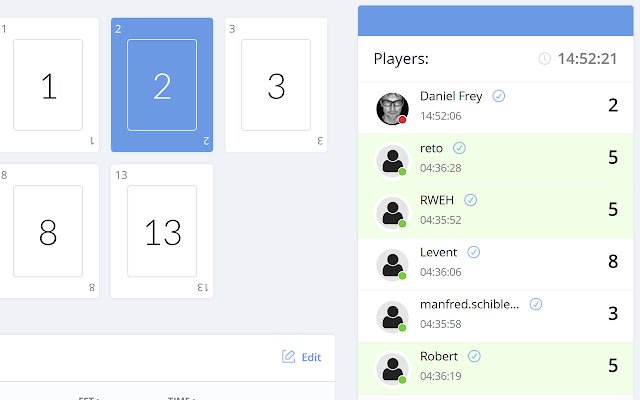Bimodal Detector in Chrome with OffiDocs
Ad
DESCRIPTION
Background In a typical planning poker, i.
e.
for software development (to typically estimate the complexity of a ticket), estimates may differ between estimators.
When do we need to discuss the different estimates, when don't we? One approach ist to detect multi-modality of the estimation distribution.
Example A team estimates using typical scrum fibonacci numbers [0, 1, 2, 3, 5, 8, 13, 20, 40, 100].
And let's say, we have the following estimates after the first round: [1, 5, 5, 8, 3, 5].
Is this worth a discussion? I.
e.
is it uni- or multi-modal? The distribution (abundance) of the estimated fibonacci numbers looks like this: [0, 1, 0, 1, 3, 1, 0, 0, 0, 0].
This contains 2 local extrema which corresponds to a bi-modality.
Discussion is worth between the two people having estimated a 1 and an 8, the lowest and the highest estimates.
Features I distinguish two cases: * Uni-modal distribution: I mark the median with a green background.
* Multi-modal distribution: I colorize the peaks of the distribution (those values which are most abundant) with a light red background color and extrema to discuss with a darker right background.
What is currently supported? I currently support plannings at https://www.
planitpoker.
com with the default scrum fibonacci numbers as mentioned above in the example.
Version 1.2020.0330.2333: - Adjusted the logic and tested thoroughly Version 1.0 - Bugy version where the logic is broken
Additional Information:
- Offered by daniel.frey
- Average rating : 0 stars (hated it)
- Developer This email address is being protected from spambots. You need JavaScript enabled to view it.
Bimodal Detector web extension integrated with the OffiDocs Chromium online
















